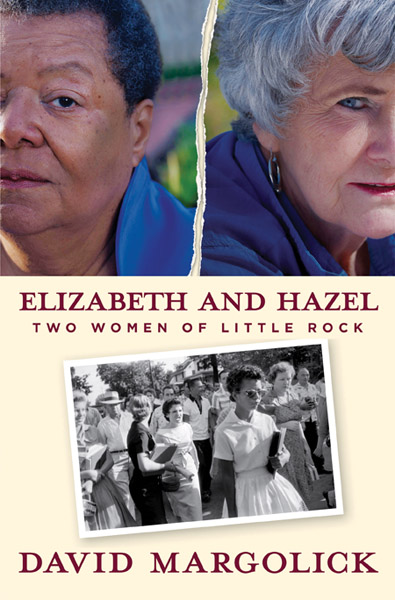Books |
Elizabeth and Hazel: Two Women of Little Rock
David Margolick
By
Published: Oct 06, 2011
Category:
Non Fiction
===================
==============
American mass media and American politicians must surely believe we are credulous children, because they love to tell us bedtime stories.
Remember Jessica Lynch, the soldier who was captured in the Iraq war — and was then dramatically rescued? (The truth was less dramatic.)
Remember Pat Tillman, the football player killed by the Taliban in Afghanistan? (In fact, he was killed by an American bullet.)
Now consider Elizabeth Eckford and Hazel Bryan. Their names were yoked together in Little Rock, Arkansas, in 1957, when 15-year-old Elizabeth was one of nine African American students trying to integrate a high school and Hazel, a white girl standing right behind her, shrieked: "Go home, nigger! Go back to Africa!" At that exact moment, a photographer snapped their picture.
That instantly notorious photograph sent a dual message: the racism of Southern whites, the saintliness of those who stood up for equal rights and opportunities. (Two days later, President Eisenhower sent in the 101st Airborne Division to escort the Little Rock Nine into Central High School.) But that photo wasn’t the end of this story — it was the beginning.
Fifty miles away, 11-year-old Bill Clinton was seeing the drama through Elizabeth Eckford’s eyes — and losing his racial prejudice. In l963, when Elizabeth was 21, a chastened and changed Hazel called her to apologize. They met. Appeared together on Oprah. Became poster girls for racial reconciliation.
Well, yes. And no.
In “Elizabeth and Hazel: Two Women of Little Rock,” veteran journalist David Margolick gets extraordinary access to both women and, for the first time, tells a story that is almost novelistic in its complexity. It’s not about race, really. Or issues. This story is about two women who are as complex as we like to think we are — and how a split second did and didn’t define their lives. [To buy Elizabeth and Hazel” from Amazon, click here. For the Kindle edition, click here.]
Which woman tried to commit suicide? Who still lives in her childhood home? Who, twice, put her kids into foster care? Who sometimes slept for 16 hours a day?
Who bristled at the media coverage? Who doesn’t want to have yet another photo taken? And for these two women, the biggest question of all: who really moved on? And then a big one for us: How deep is the racial divide in this country — and in our hearts?
Someday “Elizabeth and Hazel” will be a textbook. Long before, on the civil rights bookshelf, it will be considered a classic.
=======
To read an excerpt, click here.


